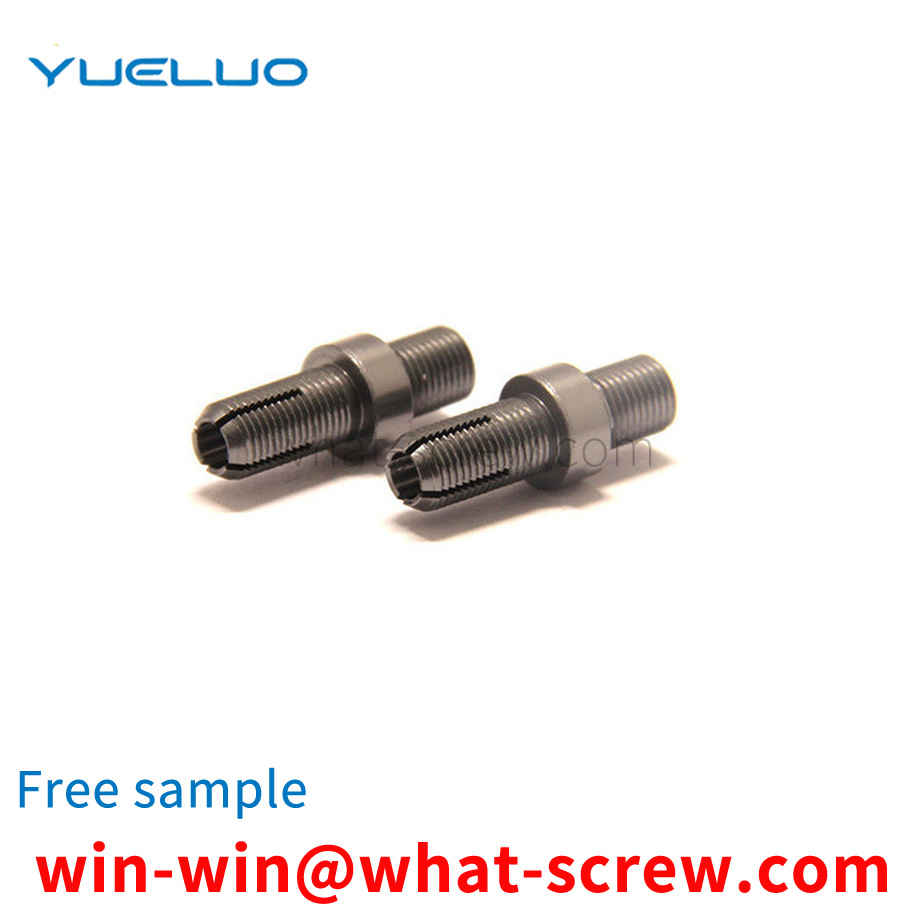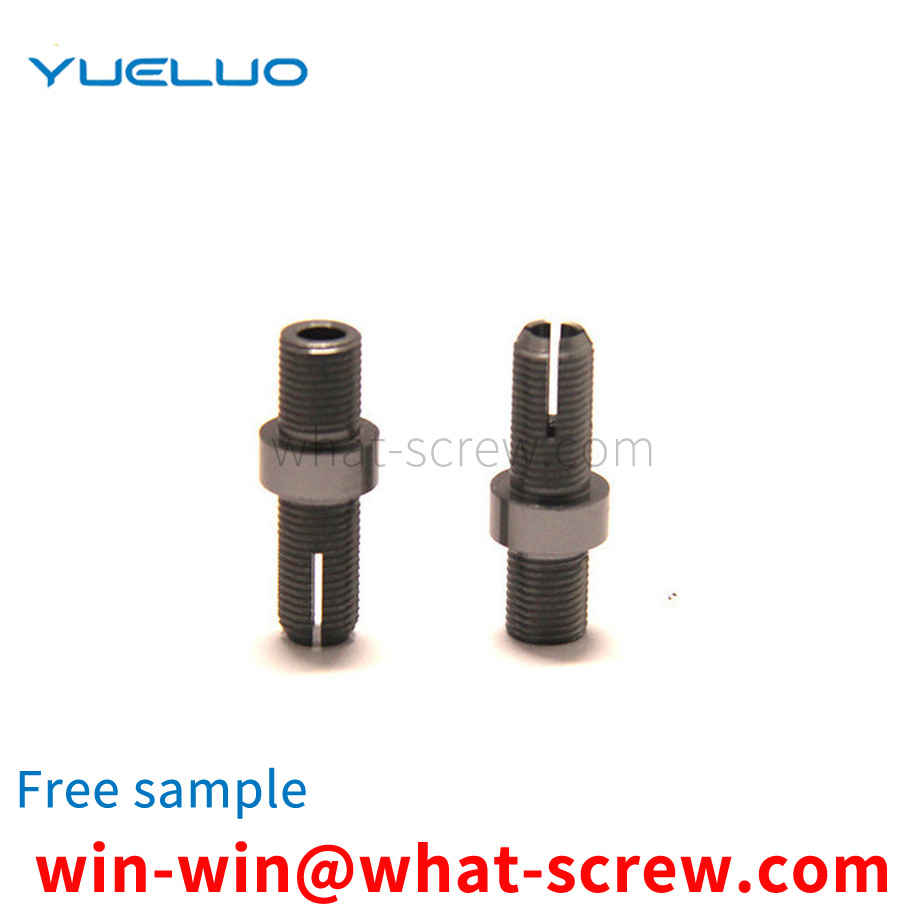⑥ Surface Treatment Zn: White Zinc C: Color Zinc B: Blue Zinc F: Black Zinc O: Black Oxide Ni: Nickel Cu: Bronze Br: Red Copper P: Phosphating
At present, drum brakes are usually used for rear brakes of automobiles, and pump parts assemblies are widely used. The traditional assembly method is to use tools such as screwdrivers and retaining ring pliers for assembly. The disadvantage is that the assembly efficiency is low, the accuracy is average, and assembly quality problems are prone to occur, which affects the performance of the product assembly. Now take the brake wheel cylinder assembly with automatic clearance adjustment mechanism produced by our factory as an example to illustrate the installation of the elastic retaining ring
Hex cap screw and Hex bolt Hex bolt As the name suggests, it is a male threaded fastener with a hexagonal head, designed to be turned with a wrench. According to the ASME B18.2.1 standard, the head height and shank length tolerance of the hexagon head screw (Hex cap screw) is smaller than that of the general large hexagon bolt (Hex bolt), so ASME B18.2.1 hexagon screw is suitable for installation in all hexagon bolts that can be used. places, also including places where the large hex bolts are too large to be used. The screw head of the hexagon socket screw is round on the outside, and the middle is a concave hexagon, and the hexagon screw is the kind of common hexagonal screw head. The hexagon socket head screwdriver looks like a '7'. Cut two sections of a hexagonal steel bar and bend it at 90 degrees to form a hexagon socket head screw wrench, which is sold in hardware tool stores. Hexagon socket screwdrivers are not so-called mobile phone special screwdrivers. Mobile phone special screwdrivers can be bought at the booths that sell repair tools in the electronics market. Hexagon socket head cap screws are often used in machinery, mainly because they are easy to fasten, disassemble, and not easy to slip. The Allen wrench is generally a 90° bend. One end of the bend is long and one side is short. When using the short side to drive screws, holding the long side can save a lot of force and tighten the screws better. The long end has a round head (a hexagonal cylinder is similar to a sphere) and a flat head. The round head can be easily slanted and disassembled, and some parts that are inconvenient to lower the wrench can be installed. The manufacturing cost of the outer hexagon is much lower than that of the inner hexagon. Its advantages are that the screw head (the force position of the wrench) is thinner than the inner hexagon, and some places cannot be replaced by the inner hexagon. In addition, machines with low cost, low power strength and low precision requirements use much less hexagon socket screws than external hexagon screws. [1] Socket cap screw, also known as socket head screw or Allen bolt, is a screw with a hexagonal inner hole on the head, with a hexagonal ruler (hex key, Allen wrench or Allen key) Tighten or loosen only after inserting into the inner hole. The most commonly used hexagon socket head screws are cylindrical head screws with a head diameter of about 1.5 times the main diameter of the thread (1960 series). Countersunk head cap screw. The countersunk hole design allows the screw head to be rotated without being exposed on the surface of the fixed object, so it is mostly used in places where the surface is small and it is inconvenient for traditional wrenches to use.
Metric threads are measured in MM (millimeters) and have a cusp angle of 60 degrees. Both US and Imperial threads are measured in inches. The cusp angle of the American thread is also 60 degrees, while the cusp angle of the imperial thread is 55 degrees. Due to the different units of measurement, the representation methods of various threads are also different. For example, M16-2X60 represents a metric thread. His specific meaning is that the nominal diameter of the screw is 16MM, the pitch is 2MM, and the length is 60MM. Another example: 1/4—20X3/4 means the inch thread, what he specifically means is the nominal diameter of the screw It is 1/4 inch (one inch = 25.4MM), there are 20 teeth on one inch, and the length is 3/4 inch. In addition, if you want to express American screws, UNC and UNF are usually added to the back of the British screws to distinguish between American coarse teeth or American fine teeth. In the usual domestic sales business, the most common standards we encounter are GB (National Standard) and DIN (German Standard). In the production of Yaoda, the following standards are mainly encountered: GB30; GB5783; GB5782; GB52; GB6170; GB818; GB819; GB845; GB846; GB70; DIN912; DIN933; It has been replaced by GB5783 (new national standard). GB52 (old national standard) has been replaced by GB6170 (new national standard) in the standard book.
An anti-loosening nut structure includes a flat nut and an oblique nut. One end surface of the oblique nut is an oblique surface, and an angle is formed between the oblique surface and the vertical line of the screw hole axis of the oblique nut. Nuts are installed on the bolts one after another, and the mating contact surfaces of the two nuts include the inclined surface, which are tightened in sequence.
We have many years of experience in the production and sales of screws, nuts, flat washers, etc. The main products are: round rivet nuts, high-polished pins, galvanized square nuts, POSH parts gaskets and other products, we can provide you with fastening suitable for you piece solution.



















 Service Hotline
Service Hotline




